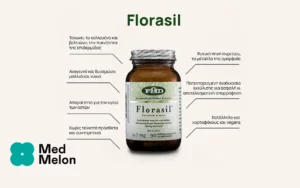Scientific Names of Club Moss:
Lycopodium clavatum L. [Fam. Lycopodiaceae]
Forms:
Green leaves, stems and other above-ground parts of Lycopodium clavatum; yellow powder obtained from the kidney-shaped sporangia of running club moss.
Traditional Usage:
– Anti-inflammatory
– Bladder Health Maintenance
– Eczema
– Edema
– Fevers
– Gastritis
– Heartburn
– Indigestion
– Infections (externally)
– Memory Loss
– Painful Urination
– Senility
– Skin Irritation
– Urinary System Gravel
– Urinary System Problems
– Water Retention
Overview:
Club Moss, Lycopodium clavatum L. [Fam. Lycopodiaceae], also known as ground pine, common or running club moss, is a creeping perennial found in the temperate and colder regions of Earth’s northern hemisphere including in North America, Europe and China. American Indians used the plant tea for postpartum pains, fever and weakness. In folk medicine, the spores were used medicinally for treating diarrhea, dysentry and rheumatism. The spores were also traditionally used as a diuretic, particularly for bladder health maintenance and urinary system problems, including painful, sandy, and bloody urination, and as a soothing, absorbent powder for skin irritations and inflammations in the case of herpes, dermatitis, eczema, ulcers, boils, nodes, swelling, and other skin infections and abrasions. Externally, the spores were also used as a styptic and as powders for baby’s chafing. Club moss is also used to treat gastritis, heartburn, indigestion and fevers, including those resulting from rare forms of malaria. Native American Indians also used the spores as a drying agent for wounds and a treatment for nosebleeds and diaper rash. The powdery club moss spores, also known as ‘vegetable sulphur’, were formerly used in the manufacturing of pills as a binding agent and as a coating to prevent pills and suppositories from sticking to each other. The spores are still used today to powder rubber products, including condoms, and as a body powder for babies and bedridden patients. Resent studies found that Lycopodium clavatum contains an enzyme (Prolyl Endopeptidase-PEP) possibly effective for improving memory and reversing amnesia and Alzheimer’s disease. Two species of club moss sought for as foods by the Chippewa also contain a compound called huperzine, recognized as a potential treatment for Alzheimer’s disease. Huperzine inhibits the breakdown of acetylcholine in the brain, a neurotransmitter that plays a key role in recognition, reasoning and memory.
Active Ingredients:
Club Moss contains: 0.2% alkaloids, which belong to different heterocyclic ring systems. Over 100 alkaloids have been isolated from Lycopodium species, which belong to about 20 different skeletal types. The principal alkaloids are lycopodine and dihydrolycopodine; acetyldihydrolycopodine, lycodine, anhydrolycodoline, and lycodoline. Trace amounts of flavonoids (chrysoeriol, luteolin, apigenin 4-glucoside, etc), caffeic acid, and triterpenes.
Suggested Amount:
To make the tea, pour boiling water over 1.5 grams (1 teaspoon = 1 gram) of finely cut club moss, steep 5-10 minutes, then strain. Drink one cup two or three times per day. Do not use over long periods of time as side effects may occur.
Drug Interactions:
None known.
Contraindications:
None known.
Side Effects:
Herbs from the genus Lycopodium are generally reputed to be nontoxic when used as recommended and Lycopodium clavatum is listed by the German Commission E for treating several different conditions. With prolonged use, however, toxic alkaloids may irritate the mucus membranes, cause vomiting, and diarrhea. Club moss alkaloids have been reported to cause uterine contractions and peristalsis in the small intestine in rodents. Excessive or prolonged use of club moss in humans is not recommended, as it may cause irritation to the lining of the mouth, throat, stomach, and intestines. Allergic and asthmatic reactions to the spores of Lycopodium clavatum have also been noted in several studies. The spores are highly flammable and should be stored with caution; they were used in early flash photography, stage lighting and for fireworks. It is also important to note that the common club moss, Lycopodium clavatum, can be easily confused with Lycopodium selago, the fir club moss. Two patients were recently reported (2000) who drank a tea, erroneously prepared from dried herbs of Lycopodium selago, which resulted in sweating, vomiting, diarrhea, dizziness, cramps, and slurred speech. These symptoms were suggestive of a cholinergic mechanism. The amount of huperzine A found in the Lycopodium selago sample used for the tea preparation was calculated to be sufficient for a relevant acetylcholinesterase inhibition. Researchers concluded that the signs and symptoms of Lycopodium selago poisoning are consistent with the anticholinesterase activity of huperzine A and should favorably respond to atropine therapy. This report demonstrates once more that laymen should not be encouraged to gather their remedies from “Mother Nature” without advanced botanical knowledge.
References:
Duke, J. 1997: The Green Pharmacy, The Ultimate Compendium of Natural Remedies from the World’s Foremost Authority on Healing and Herbs. pp. 45-46. Rodale Press.
Foster S, and Duke JA. 1990. Clubmoss in Medicinal Plants. Houghton Mifflin Co., New York, NY, p. 304.
Pojar, J. and A. MacKinnon (Eds.) 1994. Plants of Coastal British Columbia, including Washington, Oregon and Alaska. Publ. by Lone Pine Publishing, 202A-1110 Seymour Street, Vancouver, B.C., Canada, V6B 3N3. Pp. 432.
Tezuka Y, Fan W, Kasimu R, Kadota S. 1999. Screening of crude drug extracts for prolyl endopeptidase inhibitory activity. Phytomedicine. 1999 Jul; 6(3): 197-203.
Wichtl M and NG Bisset (eds). 1994. Lycopodii herba – club moss. In Herbal Drugs and Phyto-pharmaceuticals. (English translation by Norman Grainger Bisset). CRC Press, Stuttgart, Pp. 309-310.




